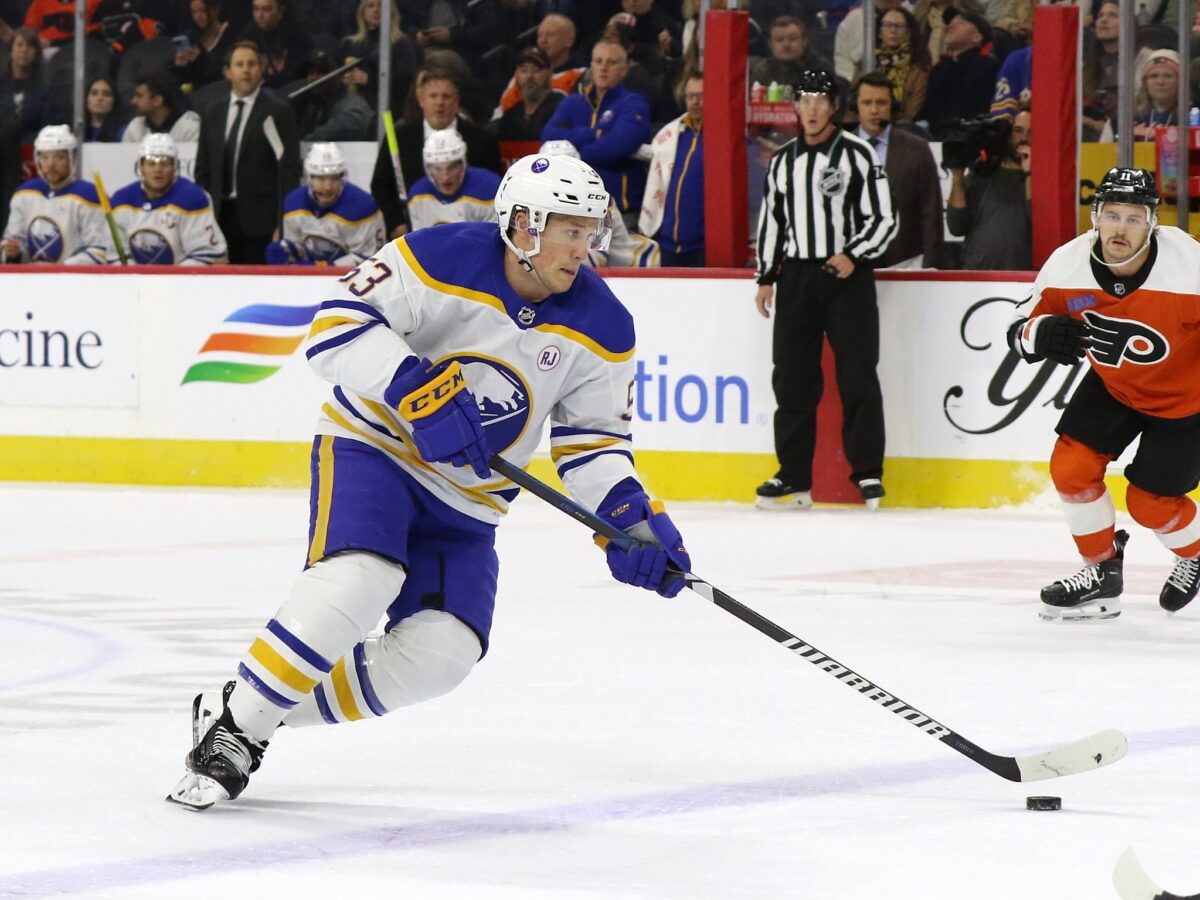Following his buyout from the Buffalo Sabres, the Edmonton Oilers signed Jeff Skinner to a one-year deal worth $3 million. The deal comes in well below what he could have received elsewhere due to his desire to contend for a Stanley Cup. The 32-year-old is a veteran of 1,006 NHL games. He has 357 goals and 670 points. He has yet to make the playoffs in his 14-year career.
Where Does Skinner Fit?
The first factor when assessing expectations for Skinner this season must be determining his spot in the lineup. Throughout his career, he has been a mainstay in his team’s top six and powerplay. He has averaged nearly 17 minutes per game throughout his career, largely due to his history of being on weak teams. Since the Oilers have a deep forward core, it is easy to think his ice time will decrease, but that may not be the case.
The current expectation is to see Skinner join Leon Draisaitl on his left wing on the second line. Draisaitl spent the majority of the last season with Zach Hyman and Connor McDavid. However, given head coach Kris Knoblauch’s decision to play Hyman and McDavid with Ryan Nugent Hopkins for the majority of the 2024 playoffs, Draisaitl is likely to get new linemates. This is only increasingly likely since his third and fourth most popular linemates were Warren Foegele and Ryan McLeod, who are both on new teams this season.
Related: Edmonton Oilers’ Top 10 Prospects for 2024-25 Season
Skinner is a very strong skater who is not just fast in a straight line but also side to side. He is shifty, mobile, agile, and knows how to navigate the offensive and neutral zones as well as anyone in hockey. Combining his skating with his shot and vision will allow him to thrive alongside Draisaitl, who saw most of his success stem from playing alongside speedy forwards. The line’s overall production will ultimately come down to who the third forward is (likely Viktor Arvidsson), but it is no doubt going to be one of the most productive lines in the league.
Skinner’s Point Production
Over the past three seasons, Skinner has scored 92 goals in 233 games, a 32-goal pace over an 82-game season. As well, he has a career-high of 40 goals (2018-19), set while playing for the bottom-feeding Sabres. On a Stanley Cup contender like the Oilers, his point production has nowhere to go but up, especially alongside Draisaitil.

The upper bound of Skinner’s point production lands at 40+ goals and 70+ points. To do this, he would need to establish himself full-time on the powerplay, ideally on the first unit. He would also need to have someone like the speedy Arvidsson on his line but still be utilized as Draisaitl’s primary option.
The lower bound of Skinner’s point production lands as a 15-20 goal, 40-45 point scorer. This is quite unlikely, especially because of the situation he is joining, but still possible. Around his age, skaters tend to slow down, and given Skinner relies on his skating to produce, this would be a catastrophic asset to lose. However, there is no reason to believe his skating will regress anytime soon as he looked as fast and elusive as ever last season.
The most likely outcome for Skinner is to score 28-32 goals and 60-65 points. He is going to see time on the powerplay so his 12 powerplay points from last season are going to be closer to 18-20. His offensive efficiency is also going to increase in this improved situation, but his ice time is likely to slightly decrease to just above 15 or so minutes per night.
In the end, a 30-goal, 60-65-point season from Skinner would be a massive win for the Oilers, especially given his bargain contract. As well, Skinner will have no regrets, as he is still getting paid from the Sabres’ buyout and he is going to land another expensive contract next offseason if he can put up a strong offensive season.
